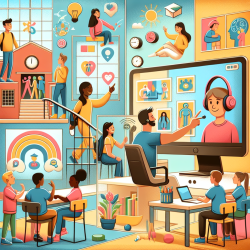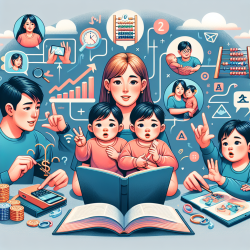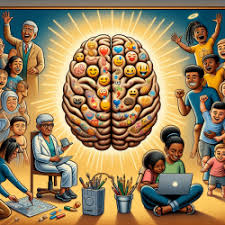The Power of Metaphors in Child Development
In the realm of child development, understanding the intricacies of well-being is crucial for practitioners aiming to foster positive outcomes. The research article "The Garden and the Orchestra: Generative Metaphors for Conceptualizing the Complexities of Well-Being" offers insightful metaphors that can enhance our understanding and approach towards well-being, particularly in educational settings.
Metaphors as Tools for Understanding
The article introduces two powerful metaphors—the garden and the orchestra—that provide a nuanced framework for conceptualizing well-being. These metaphors allow us to appreciate the multifaceted nature of well-being, moving beyond traditional models like the pyramid or ladder, which often fail to capture the complexity of human flourishing.
The Garden Metaphor
Imagine each child as a unique plant in a vast garden. Just as a plant requires the right conditions to thrive, children need a supportive environment to reach their full potential. This metaphor emphasizes the importance of nurturing all aspects of a child's development—physical, mental, social, and spiritual. Practitioners can use this metaphor to create holistic interventions that address various dimensions of a child's life, ensuring balanced growth and development.
The Orchestra Metaphor
Similarly, the orchestra metaphor likens a child to an instrument in a symphony. Each instrument contributes to the overall harmony, just as each aspect of a child's well-being contributes to their overall development. This metaphor highlights the importance of coordination and harmony between different aspects of a child's life, encouraging practitioners to consider how various factors—such as family, school, and community—interact to influence a child's well-being.
Implications for Practitioners
For speech-language pathologists and educators, these metaphors provide a framework for developing comprehensive strategies that promote well-being. By viewing children as part of a larger ecosystem or symphony, practitioners can design interventions that are not only effective but also sustainable, fostering long-term growth and flourishing.
Encouraging Further Research
The metaphors presented in the article invite further exploration and research. Practitioners are encouraged to delve deeper into these concepts, examining how they can be applied in various educational contexts to improve outcomes for children. By embracing these metaphors, we can enhance our understanding of well-being and develop more effective strategies for supporting child development.
To read the original research paper, please follow this link: The Garden and the Orchestra: Generative Metaphors for Conceptualizing the Complexities of Well-Being.










